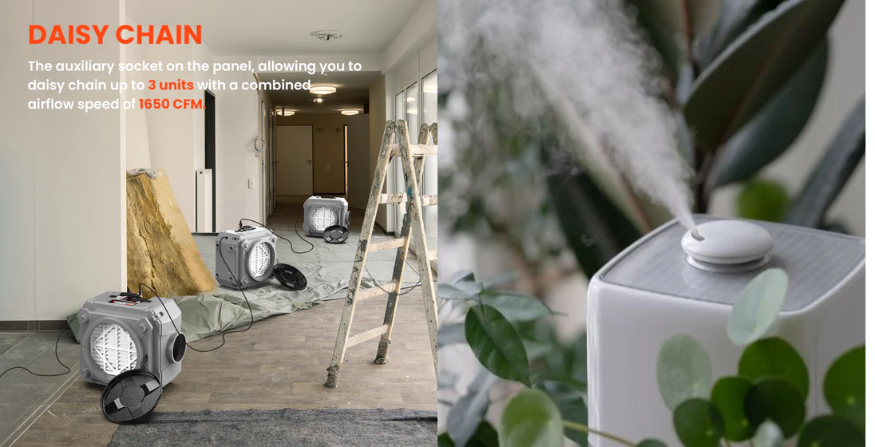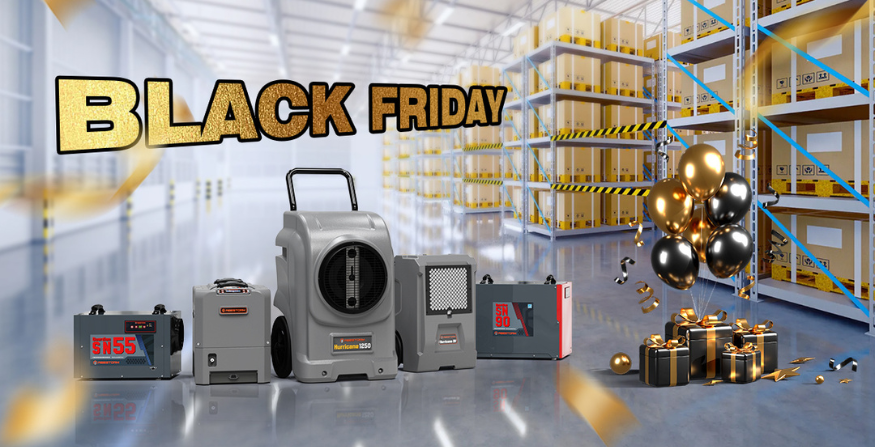Dehumidifiers are essential for removing excess moisture from indoor air, especially in humid climates or basement areas prone to dampness. However, most homeowners may need to know that dehumidifiers must be operated within a certain temperature range to function properly. While dehumidifiers effectively pull moisture out of the air, they do so through a process that requires the air to be warm enough for condensation.
Below a minimum temperature threshold, typically between 40-50 degrees Fahrenheit, the air becomes too cool for effective moisture removal. People who use Dehumidifiers year-round need to understand their machine’s lower operating limit. Running the unit in temperatures below this can damage its components over time and reduce its efficiency or ability to dry out air. This introductory text aims to outline why dehumidifiers have minimum temperature thresholds and how operating one too cold can impact its performance and lifespan.
Dehumidifier Temperature Minimum Guidelines
Many common residential dehumidifiers use refrigerants and condensers to extract moisture from rooms that retain humidity. For typical basement and crawl space models, temperatures between 60-80 degrees F allow them to most efficiently condense water vapor on their coils for easy drainage. Some specialized refrigerant naturally dehumidifiers can function as low as 41 degrees, but their effectiveness declines the colder it gets since they have to work harder to remove moisture from the air as temperatures decrease.
The ideal temperature range for a dehumidifier to effectively remove moisture from the air is between 70-80°F. When the temperature is within this range, condensation will easily form on the cooling coils and collected water will drain properly. If the temperature rises above 80°F, the dehumidifier will have to work harder to extract the same amount of moisture from the air. Meanwhile, temperatures below 70°F impact efficiency and capacity, with the unit removing less water vapor per hour than at optimal temperatures. Therefore, for maximum performance, homeowners should operate their dehumidifier in a room that is between 70-80°F.
Nearly all dehumidifier manufacturers provide guidelines on their units' minimum and maximum recommended operating temperatures. This is because the dehumidifier may not function properly or efficiently remove moisture from the air outside of a certain range. Most residential dehumidifiers are designed to operate effectively between 41-90 degrees Fahrenheit.
Below 41 degrees, the internal components like the compressor and fan can struggle to perform under colder conditions. Some manufacturers may specify a slightly higher minimum temperature of 45-50 degrees Fahrenheit. It's important to check the owner's manual or product specifications for the specific brand and model of the dehumidifier used to find the temperature thresholds it is designed to dehumidify within. Following the manufacturer's recommendations helps ensure optimal performance.

How to Dehumidify in Cold Weather?
The temperature has a significant impact on how well a dehumidifier can operate. At lower temperatures, the air can hold less moisture content than at higher temperatures. So for a dehumidifier to extract the same amount of water from the air, it has to work much harder in colder conditions. The internal components like the compressor and fan can struggle more in the cold as well. When air temperature drops too low, near or below freezing, internal condensation can begin to freeze inside the unit rather than properly draining out. This is because as the air passes over the cold coil, the moisture condenses but may not be able to drain away as liquid water before it has a chance to freeze. The freezing condensation can damage the dehumidifier over time.
If humidity needs to be controlled in areas that experience temperatures below a dehumidifier's minimum, there are a few options. Using a unit specifically rated for low-temperature performance is recommended when possible. Alternately, a portable dehumidifier can be run occasionally for short periods just to supplement a home's standard HVAC system.
Best Dehumidifiers for Extreme Temperatures
If you need to remove moisture from especially hot or cold environments, you'll want a dehumidifier designed to handle more extreme temperature conditions. For very high heat, look for dehumidifiers rated for continuous use above 100 degrees F, as cheaper models may shut off or lose effectiveness in excessive heat.
Variable speed fans and efficient compressors ensure adequate air circulation and moisture extraction capabilities even in sweltering indoor temperatures. For extreme cold, desiccant dehumidifiers that rely on a moisture-absorbing substrate rather than refrigeration can operate effectively down to -20 degrees F.
Safety Considerations
It's important for homeowners and contractors using dehumidifiers to be aware of several safety considerations related to operating them outside of their recommended temperature ranges. Running a unit below its rated minimum can put undue stress on internal components over extended periods and potentially lead to breakdown or damage. If air passing through is too cold, moisture may not fully condense, allowing frost and ice to accumulate inside more quickly. Frequent auto-defrost cycles working to remove this extra condensation put additional strain on the appliance.
The compressor and coils can experience greater thermal stresses when trying to condense moisture from air colder than intended. Over time, this accelerated wear can cause premature failure. In cold conditions, there is also a risk of condensation leaks developing or components overheating if they become overloaded while working against very low intake temperatures. To avoid potential safety hazards like electrical faults from excessive frost, it's best to only use dehumidifiers within their specified operating temperature guidelines.
Humidity levels: If humidity is very high even in cold temperatures, a dehumidifier may still be needed below manufacturer minimums.
Location: Areas that regularly experience below-freezing temperatures will require a dehumidifier rated for those conditions.
Unit size: Larger dehumidifiers tend to perform better in colder weather than smaller ones.
Drainage options: Make sure it can still drain properly or has a pump to empty if condensation freezes.
Ventilation/air movement: Good airflow helps the unit perform better and avoid freezing in very cold spots.
Relative humidity vs. temperature: Cold air may still have high relative humidity requiring the removal of moisture.
Indoor temperature range: If the indoor space doesn't drop much below the minimum, occasional use may be fine.
Energy efficiency: Performance drops off significantly below minimum rated temps.

Conclusion
Dehumidifiers can help control moisture even in cooler temperatures, following the manufacturer's recommended operating range is important for safe and efficient performance. Most residential units are rated to function between 41-90°F. Below 41°F, components like compressors can struggle and condensation risks freezing inside. However, on very humid days even in winter, a short run of the dehumidifier may help remove excess moisture.
It's paramount to consider individual unit specs, drainage capabilities, indoor temperatures, and ventilation before operating below minimums. A larger dehumidifier, those approved for below-freezing use, or occasional brief runs is best in very cold conditions. Checking humidity levels against temperature is also advisable. When choosing and using a dehumidifier, understanding the effect of low temperatures and considering all environmental factors will ensure optimal moisture removal and prevent any damage from unintended freezing within the appliance.









Shop For Dehumidifier